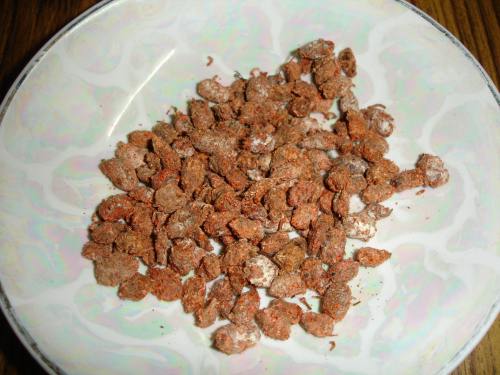|
Hedychium Spicatum
''Hedychium spicatum'' is a plant species native to China (Guizhou, Sichuan, Tibet, Yunnan), the Himalayas, Myanmar, Thailand and Ethiopia. ''Hedychium spicatum'' is a small, hardy perennial that grows to around , with green leaves and large orange and white flowers. It is also commonly known as spiked ginger lily, or perfume ginger. Uses The Indian medicinal system (Ayurveda) described the species as having pungent, light, bitter, strong, heating properties. The species is also an ingredient of some traditional Chinese medicine (TCM), traditional Tibetan medicine and Unani medicine Unani or Yunani medicine (Urdu: ''tibb yūnānī'') is Perso-Arabic traditional medicine as practiced in Muslim culture in South Asia and modern day Central Asia. Unani medicine is pseudoscientific. The Indian Medical Association describes Un .... The powder and decoction of the rhizome are used for a variety of conditions. The rhizome is also chewed by the inhabitants of Uttarakhand to clea ... [...More Info...] [...Related Items...] OR: [Wikipedia] [Google] [Baidu] |
China
China, officially the People's Republic of China (PRC), is a country in East Asia. It is the world's List of countries and dependencies by population, most populous country, with a Population of China, population exceeding 1.4 billion, slightly ahead of India. China spans the equivalent of five time zones and Borders of China, borders fourteen countries by land, the List of countries and territories by land borders, most of any country in the world, tied with Russia. Covering an area of approximately , it is the world's third List of countries and dependencies by area, largest country by total land area. The country consists of 22 provinces of China, provinces, five autonomous regions of China, autonomous regions, four direct-administered municipalities of China, municipalities, and two special administrative regions of China, Special Administrative Regions (Hong Kong and Macau). The national capital is Beijing, and the List of cities in China by population, most populous cit ... [...More Info...] [...Related Items...] OR: [Wikipedia] [Google] [Baidu] |
Unani Medicine
Unani or Yunani medicine (Urdu: ''tibb yūnānī'') is Perso-Arabic traditional medicine as practiced in Muslim culture in South Asia and modern day Central Asia. Unani medicine is pseudoscientific. The Indian Medical Association describes Unani practitioners who claim to practice medicine as quacks. The term '' Yūnānī'' means "Greek", as the Perso-Arabic system of medicine was based on the teachings of the Greek physicians Hippocrates and Galen. The Hellenistic origin of Unani medicine is still visible in its being based on the classical four humours: phlegm (), blood (''dam''), yellow bile (''ṣafrā'') and black bile (''saudā), but it has also been influenced by Indian and Chinese traditional systems. History Arab and Persian elaborations upon the Greek system of medicine by figures like Ibn Sina and al-Razi influenced the early development of Unani. Unani medicine interacted with Indian Buddhist medicine at the time of Alaxander's invasion of India. There wa ... [...More Info...] [...Related Items...] OR: [Wikipedia] [Google] [Baidu] |
Flora Of Ethiopia
The richness and variety of the wildlife of Ethiopia is dictated by the great diversity of terrain with wide variations in climate, soils, natural vegetation and settlement patterns. Ethiopia contains a vast highland complex of mountains and dissected plateaus divided by the Great Rift Valley, which runs generally southwest to northeast and is surrounded by lowlands, steppes, or semi-desert. Ethiopia is an ecologically diverse country, ranging from the deserts along the eastern border to the tropical forests in the south to extensive Afromontane in the northern and southwestern parts. Lake Tana in the north is the source of the Blue Nile. It also has many endemic species, including 31 mammal species, notably the gelada, the walia ibex and the Ethiopian wolf ("Simien fox"). There are seven mammal species classified as "critically endangered", and others as "endangered" or "vulnerable". The wide range of altitude has given the country a variety of ecologically distinct areas, and ... [...More Info...] [...Related Items...] OR: [Wikipedia] [Google] [Baidu] |
Flora Of Thailand
''Flora of Thailand'' is a multi-volume flora describing the vascular plants of Thailand, published by the Forest Herbarium, Royal Forest Department since the 1970s. It currently consists of 12 volumes. Volumes *Volume 1 – not yet published *Volume 2(1-4) – Actinidiaceae, Apostasiaceae, Balanophoraceae, Bonnetiaceae, Cannabidaceae, Cardiopteridaceae, Casuarinaceae, Centrolepidaceae, Cephalotaxaceae, Connaraceae, Cupressaceae, Cycadaceae, Dilleniaceae, Ebenaceae, Elaeocarpaceae, Flagellariaceae, Gnetaceae, Goodeniaceae, Haloragaceae, Hanguanaceae, Hippocastanaceae, Icacinaceae, Illliciaceae, Irvingiaceae, Juncaceae, Lowiaceae, Magnoliaceae, Nyssaceae, Ochnaceae, Oxalidaceae, Pinaceae, Podocarpaceae, Portulacaceae, Rafflesiaceae, Restionaceae, Rhizophoraceae, Rosaceae, Saurauiaceae, Schisandraceae, Simaroubaceae, Smilacaceae, Sphenocleaceae, Stylidiaceae, Symplocaceae, Theaceae, Triuridaceae. *Volume 3(1) (1979) – Psilotaceae, Lycopodiaceae, Selaginellaceae, Isoetaceae, Equise ... [...More Info...] [...Related Items...] OR: [Wikipedia] [Google] [Baidu] |
Flora Of Myanmar
Flora (: floras or florae) is all the plant life present in a particular region or time, generally the naturally occurring ( indigenous) native plants. The corresponding term for animals is ''fauna'', and for fungi, it is '' funga''. Sometimes bacteria and fungi are also referred to as flora as in the terms ''gut flora'' or ''skin flora''. Etymology The word "flora" comes from the Latin name of Flora, the goddess of plants, flowers, and fertility in Roman mythology. The technical term "flora" is then derived from a metonymy of this goddess at the end of the sixteenth century. It was first used in poetry to denote the natural vegetation of an area, but soon also assumed the meaning of a work cataloguing such vegetation. Moreover, "Flora" was used to refer to the flowers of an artificial garden in the seventeenth century. The distinction between vegetation (the general appearance of a community) and flora (the taxonomic composition of a community) was first made by Jules Thurma ... [...More Info...] [...Related Items...] OR: [Wikipedia] [Google] [Baidu] |
Flora Of Nepal
The Flora of Nepal is one of the richest in the world due to the diverse climate, topology and geography of the country. Research undertaken in the late 1970s and early 1980s documented 5067 species of which 5041 were angiosperms and the remaining 26 species were gymnosperms. The Terai area has hardwood, bamboo, palm, and sal trees. Notable plants include the garden angelica, '' Luculia gratissima'', '' Meconopsis villosa'', and '' Persicaria affinis''. However, according to ICOMOS checklist (as of 2006), in the protected sites, there are 2,532 species of vascular plants under 1,034 genera and 199 families. The variation in figures is attributed to inadequate floral coverage filed studies. There are 400 species of vascular plants which are endemic to Nepal. Of these, two in particular are orchids '' Pleione coronaria'' and '' Oreorchis porphyranthes.'' The most popular endemic plant of Nepal is rhododendron (arboreum) which in Nepali language is called ''lali guras''. See als ... [...More Info...] [...Related Items...] OR: [Wikipedia] [Google] [Baidu] |
Flora Of East Himalaya
Flora (: floras or florae) is all the plant life present in a particular region or time, generally the naturally occurring ( indigenous) native plants. The corresponding term for animals is ''fauna'', and for fungi, it is '' funga''. Sometimes bacteria and fungi are also referred to as flora as in the terms ''gut flora'' or ''skin flora''. Etymology The word "flora" comes from the Latin name of Flora, the goddess of plants, flowers, and fertility in Roman mythology. The technical term "flora" is then derived from a metonymy of this goddess at the end of the sixteenth century. It was first used in poetry to denote the natural vegetation of an area, but soon also assumed the meaning of a work cataloguing such vegetation. Moreover, "Flora" was used to refer to the flowers of an artificial garden in the seventeenth century. The distinction between vegetation (the general appearance of a community) and flora (the taxonomic composition of a community) was first made by Jules Thurma ... [...More Info...] [...Related Items...] OR: [Wikipedia] [Google] [Baidu] |
Flora Of China
The flora of China consists of a diverse range of plant species including over 39,000 vascular plants, 27,000 species of fungi and 3000 species of bryophytes.Wu, Z. Y., P. H. Raven & D. Y. Hong, eds. 2006. Flora of China. Vol. 22 (Poaceae). Science Press, Beijing, and Missouri Botanical Garden Press, St. Louis More than 30,000 plant species are native to China, representing nearly one-eighth of the world's total plant species, including thousands found nowhere else on Earth. China's land, extending over 9.6 million km, contains a variety of ecosystems and climates for plants to grow in. Some of the main climates include shores, tropical and subtropical forests, deserts, elevated plateaus and mountains. The events of the continental drift and early Paleozoic Caledonian movement also play a part in creating climatic and geographical diversity resulting in high levels of endemic vascular flora. These landscapes provide different ecosystems and climates for plants to grow in, cr ... [...More Info...] [...Related Items...] OR: [Wikipedia] [Google] [Baidu] |
Traditional Tibetan Medicine
Traditional Tibetan medicine (), also known as Sowa-Rigpa medicine, is a centuries-old traditional medical system that employs a complex approach to diagnosis, incorporating techniques such as pulse analysis and urinalysis, and utilizes behavior and dietary modification, medicines composed of natural materials (e.g., herbs and minerals) and physical therapies (e.g. Tibetan acupuncture, moxabustion, etc.) to treat illness. The Tibetan medical system is based upon Indian Buddhist literature (for example Abhidharma and Vajrayana tantras) and Ayurveda. It continues to be practiced in Tibet, India, Nepal, Bhutan, Ladakh, Siberia, China and Mongolia, as well as more recently in parts of Europe and North America. It embraces the traditional Buddhist belief that all illness ultimately results from the three poisons: delusion, greed and aversion. Tibetan medicine follows the Buddha's Four Noble Truths which apply medical diagnostic logic to suffering. History As Indian culture floode ... [...More Info...] [...Related Items...] OR: [Wikipedia] [Google] [Baidu] |
Guizhou
Guizhou (; formerly Kweichow) is a landlocked province in the southwest region of the People's Republic of China. Its capital and largest city is Guiyang, in the center of the province. Guizhou borders the autonomous region of Guangxi to the south, Yunnan to the west, Sichuan to the northwest, the municipality of Chongqing to the north, and Hunan to the east. The population of Guizhou stands at 38.5 million, ranking 18th among the provinces in China. The Dian Kingdom, which inhabited the present-day area of Guizhou, was annexed by the Han dynasty in 106 BC. Guizhou was formally made a province in 1413 during the Ming dynasty. After the overthrow of the Qing in 1911 and following the Chinese Civil War, the Chinese Communist Party took refuge in Guizhou during the Long March between 1934 and 1935. After the establishment of the People's Republic of China, Mao Zedong promoted the relocation of heavy industry into inland provinces such as Guizhou, to better prot ... [...More Info...] [...Related Items...] OR: [Wikipedia] [Google] [Baidu] |






